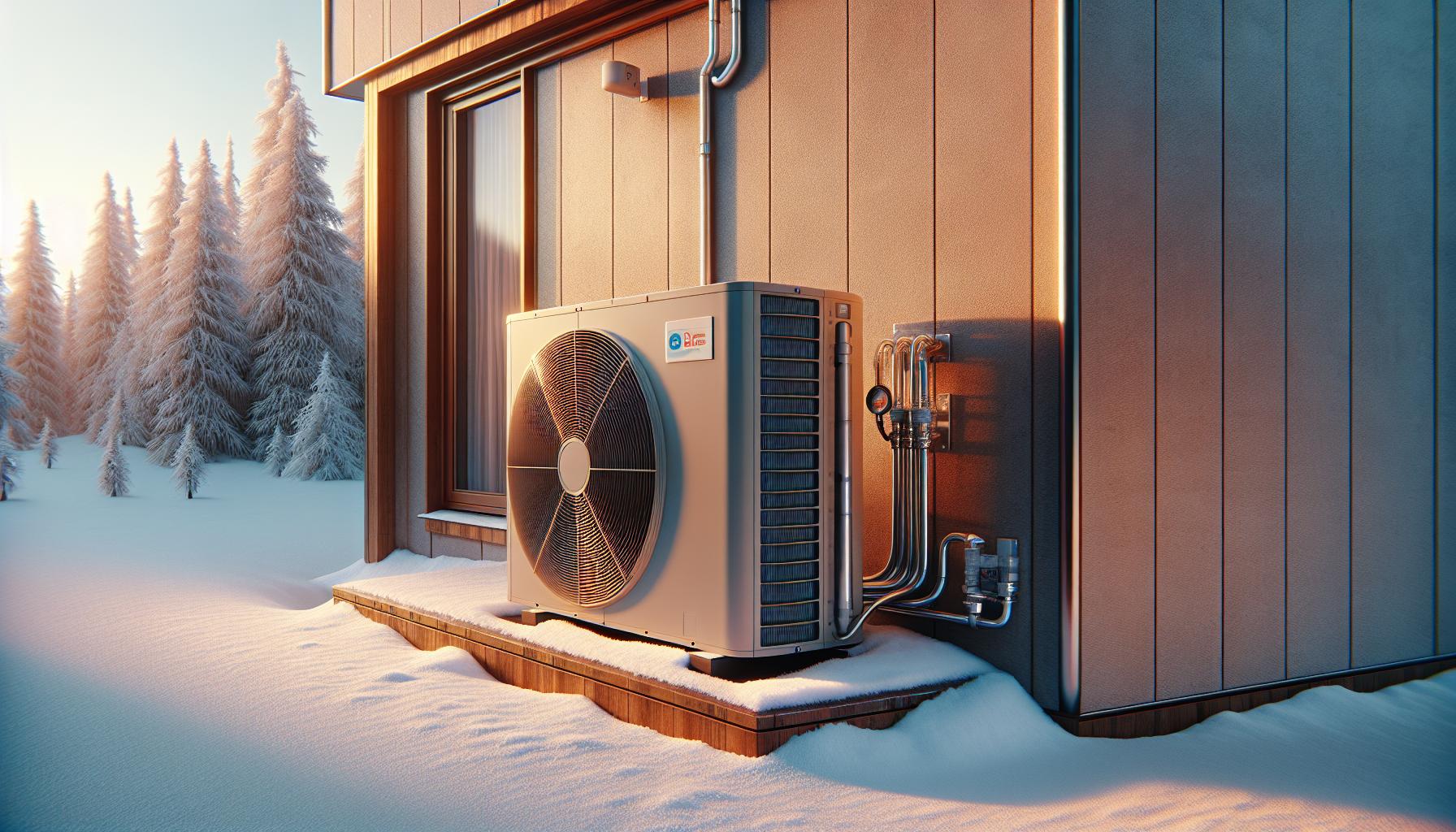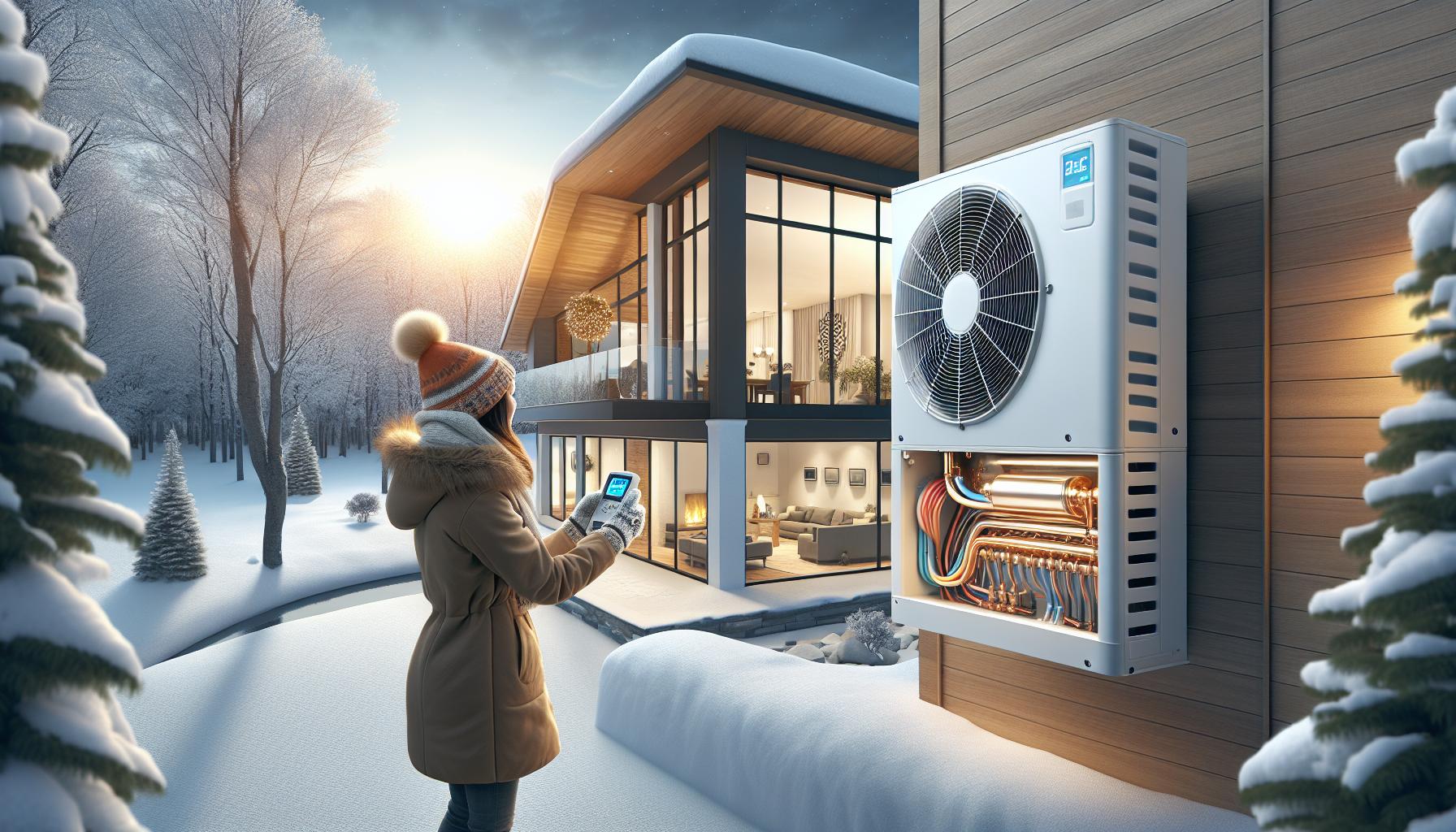As energy efficiency becomes a top priority in modern homes, understanding the intricacies of heat pump temperature ranges can make a significant difference in your energy bills and comfort levels. Heat pumps, known for their ability to both heat and cool spaces, operate within specific temperature parameters that directly impact their performance and efficiency.
In this text, you’ll discover why the temperature range of a heat pump is crucial, how it affects your system’s efficiency, and what you can do to optimise its performance. We’ll investigate into the factors that influence these ranges, such as climate, system design, and installation practices, providing you with actionable insights to ensure your heat pump operates at peak efficiency.
By the end of this read, you’ll be equipped with the knowledge to make informed decisions about your heat pump system, ensuring you maximise both comfort and savings.
What Is A Heat Pump?
A heat pump is a versatile system that heats and cools your home by transferring heat between indoor and outdoor environments. During colder months, it extracts heat from the outdoor air and moves it indoors to warm your home. Conversely, in warmer months, it removes heat from inside your home and releases it outside, keeping your living space cool.
Heat pumps rely on electricity to operate and are more energy-efficient compared to traditional HVAC systems. They work best in moderate climates but can be effective in colder regions with the right model and installation. Understanding their temperature range is crucial for optimising performance and energy savings.
Understanding Temperature Range

Heat pumps transfer heat between indoor and outdoor environments, providing both heating and cooling. Understanding their temperature range is essential for optimising performance and energy efficiency.
Key Factors Affecting Temperature Range
Heating Capacity:
The ability of a heat pump to produce heat diminishes as the outdoor temperature decreases. There is less heat to extract from colder air, making it less efficient.
Defrost Cycles:
Frost can accumulate on the outdoor coil during colder weather. Defrost cycles switch the heat pump to cooling mode temporarily to melt the frost, causing a brief drop in indoor temperature.
Optimal Temperature Range
Heat pumps perform best in moderate climates, where outdoor temperatures range between -5°C and 30°C. Within this range, they efficiently transfer heat and maintain indoor comfort.
Extreme Temperature Performance
In extreme cold (below -10°C) or heat (above 35°C), heat pumps struggle to maintain efficiency. Advanced models with enhanced features, like variable-speed compressors, perform better in these conditions.
Types Of Heat Pumps
Heat pumps come in various types, each with unique temperature ranges and efficiencies. Understanding these differences helps you choose the best system for your needs.
Air Source Heat Pumps
Air-source heat pumps function efficiently between -13°F (-25°C) and 90°F (32°C). They’re most effective when outdoor temperatures are above 25°F (-4°C). Below this, efficiency drops, and supplementary heating may be needed.
Ground Source Heat Pumps
Ground-source heat pumps, also known as geothermal heat pumps, operate within a stable temperature range of 45°F (7°C) to 75°F (24°C). They maintain high efficiency because underground temperatures are more constant, offering reliable performance year-round.
Comparing Brands And Models
Choosing the right heat pump involves comparing various brands and models to find the best fit for your needs. Here’s what you need to know about efficiency ratings, user reviews, and seasonal performance.
Efficiency Ratings
Efficiency ratings, measured by Seasonal Energy Efficiency Ratio (SEER) and Heating Seasonal Performance Factor (HSPF), indicate how well a heat pump performs. Higher SEER and HSPF values mean better energy efficiency.
User Reviews
User reviews provide real-world insights into heat pump performance. Look for feedback on reliability, noise levels, and energy savings. For instance, Mitsubishi Electric and Daikin often receive high ratings for their durability.
Seasonal Performance
Seasonal performance varies among models. Some heat pumps, like the Mitsubishi Hyper-Heating H2i, excel in colder climates, maintaining efficiency at temperatures as low as -25°C. Check performance data to ensure suitability for your local climate.
Practical Considerations
Efficiency and Temperature
Heat pumps perform best at temperatures above 25 to 30 degrees Fahrenheit (-4 to -1 degrees Celsius). Efficiency drops significantly below this range. Standard models function at 100% efficiency until the outside temperature reaches about 4°C (40°F). They become less effective between -7°C and -1°C (20°F to 30°F). Air-source heat pumps operate within a broad temperature range, from -25°C to 32°C (-13°F to 90°F), but efficiency declines at lower temperatures.
Type of Heat Pump
Air-source heat pumps are less effective in very cold weather. Geothermal systems, though more resistant to cold, still have limitations. Modern heat pumps with high HSPF ratings can work effectively down to temperatures around -15°C (5°F).
Installation Factors
Proper installation is crucial for heat pump efficiency. Ensure the unit is placed in a location that minimises exposure to extreme weather conditions. Use professional services to guarantee optimal performance.
Maintenance Tips
Regular maintenance is essential. Clean the filters every month and schedule annual inspections. Address minor issues promptly to prevent major failures.
Cost Implications
Initial installation costs can be high. But, heat pumps offer long-term energy savings. Consider the total cost of ownership, including maintenance and operational expenses, over the system’s lifespan.
Conclusion
Understanding the temperature range of heat pumps is crucial for maximising their efficiency and performance. By choosing the right model and ensuring proper installation, you can maintain a comfortable indoor environment throughout the year. Advanced models with features like variable-speed compressors offer enhanced performance in extreme temperatures, making them a viable option even in colder climates.
Regular maintenance and user reviews provide valuable insights into the reliability and efficiency of different heat pump brands. Investing in a high-quality heat pump can result in significant energy savings over time, making it a wise choice for modern homes. With the right knowledge and careful selection, you can optimise your heat pump’s performance and enjoy long-term benefits.
